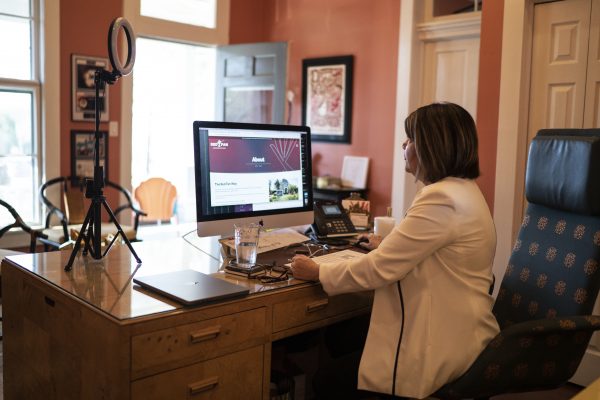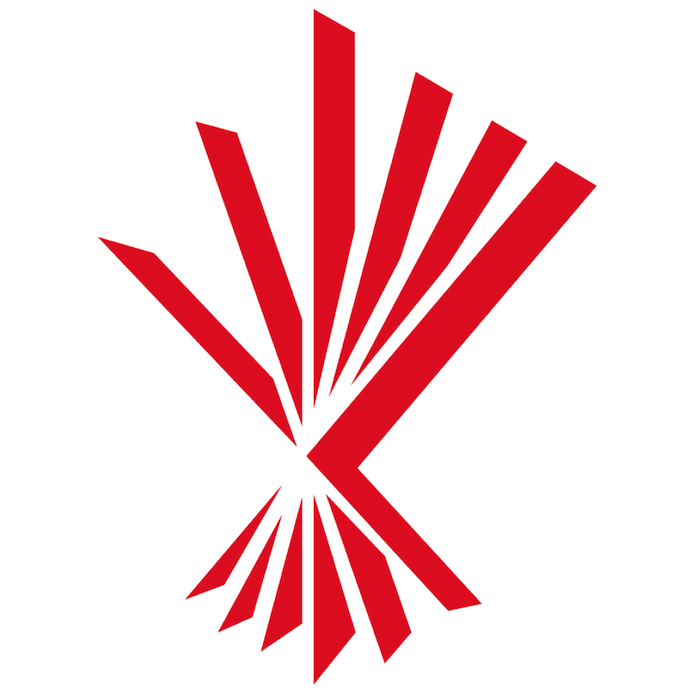In 2008, I built an agency from scratch. If you know me, you know I’m pretty strong in my opinions about how an agency should feel and operate. I’ve been on both sides of the arrangement, and my various experiences play a big part of why I decided to create my own company.
My agency turned 15 this year, so I had to reflect on what I have learned so far. As a through-and-through high tech and financial services communications pro, I leaned into what I know and love. So here are 15 lessons, one for each year of Red Fan.
1. Hire well and with purpose.
Every hire you make should be a valuable asset to your team. Beyond the skills they can contribute, each hire needs to understand the company’s vision and know that you are hiring them for the work needed now and as an investment in the organization’s future. I recommend hiring for the company you aspire to grow, with the bigger picture in view. As such, leaders should adopt a mentality of hiring and firing based on company values. Make sure you have a system for peer recognition and reward values in action. At the same time, know what makes each of your employees tick – caring about what matters to each person instead of assuming what matters is essential.
Also, it’s important to recognize we all make hiring mistakes from time to time. When these instances arise, don’t delay in unwinding those mistakes. Working with even just one person who is not pulling their weight, not caring for the company culture or not being a true team player can poison the well.
2. Set values you can remember and truly live by.
You want clients that align with your values. You want employees who embrace your company values and live them each day. Be fun in developing these and testing how they come to life internally and externally. One of my favorite values at Red Fan is “Fire in the Belly.” We come to work every day with a fire behind our desire to excel for our clients, our partnerships with our colleagues and our personal development.
3. Be both flexible and bold in your focus.
By the time I started Red Fan, I had more than 25 years of experience under my belt, bringing companies public, advising CEOs and founders and establishing brands both nationally and internationally. I had managed numerous crises and was known as a trusted adviser. It was clear that I needed to leverage that expertise, along with my industry expertise. I wasn’t marketing the agency to fit all brands. However, I sometimes opted to take on clients that didn’t fit the business strategy, but gave my team a broader experience. That strategy proved to be wise. I have since tightened that targeting with B2B tech companies, another winning strategy. Over the years, we have increased our effort in working with select nonprofits in the Austin community as well. The combination gives us the joy of being connected to our tech community and our overall community.
4. Be the go-to trusted advisors, while recommending dependable sources.
Being a trusted advisor to our clients is something the Red Fan team is known for. Being exceptionally well networked and having a set of external partners worthy of our clients matters. Making introductions to web designers, executive coaches, venture capital partners, HR strategists, customized research partners and others is a delightful experience that brings mutual benefit to our clients and agency partners alike. Having these trusted and proven relationships allows us to bring our clients the right resources when they need them, even when they ask for a service we don’t typically deliver. That’s trust. So, build a list of incredible partners that you refer and trust. The good karma comes back in spades!
5. Have a badass tech stack.
This might sound obvious, but in my research, I learned of many small PR firms that were sharing log-ins to media relations databases and not putting the financial investment in place. In 2008, I saved my pennies and ensured I could have the subscriptions that my clients would expect me to have at my fingertips while empowering my team members to learn and master these necessary tools. I’m continuously reviewing the best tech in the industry and ensuring the team has AI and data mining tools to back up our recommendations and provide high-impact insights for our clients.
6. Be present and tuned in.
Never underestimate the importance of spending time with your team. The relationships I have with my team members are vital, and the COVID era has proved that. We turned on a dime to work from home, brought companies public and continued to deliver outstanding work. But the moment we could get back together in person, that desire was strong. I’m aware of the impact each employee is making through our weekly agency meeting on Mondays. I’m also involved in the new business process, and I ensure there are times of learning and mentoring – staying true to my role as a leader and mentor in which I create an atmosphere for bringing people together.
7. Make your clients feel and look like rock stars.
Being client-focused is essential. Too often in this industry, we hear of agencies that aren’t responsive. How that’s possible in the communications field baffles me, but it’s a repeat concern. Not on my watch. As mentioned in my lesson on values, we have a collective fire in our bellies to make sure our clients know they are important and have our full attention when they need it. We are also focused on relationships, meaning we genuinely care about what our clients need to achieve and that we’re helping them think through the best ways to hit and exceed those goals with a high impact. We aim to make our clients look and feel like rock stars with outstanding measurable results they can present to their management, board and investors. You have to agree on mutual KPIs and what success looks like for your client in order to succeed.
8. Be accountable for the good and the bad.
The buck stops with us! We respond to every text, phone call and Slack message that comes to us. We are fast to understand what needs to be prioritized and whether something needs immediate action. We do what we say we will do, and we report on our work. Our clients rely on us to deliver on what we promised, and we do. But accountability is more than just delivering. We also are fast to admit if we’re disappointed in the resulting media campaign or if we make a mistake. It’s rare, but we’re human. Things are happening in the media that we can’t control, and our client relationships are long-term. We’re fast to look at ways to pivot a campaign and build on it if more time is needed or if the competition is doing something we need to be factoring in.
9. Know your value, and price well.
The value of our work is an enormous benefit to our clients. Advancing the brand equity that increases the value of the company or protects a brand during a product failure or executive departure is important. Being a brand reputation expert has tremendous value. In turn, we make sure to manage our finances with precision. One of the smartest investments I made was investing in a trusted financial professional to be my ally in growing the business and understanding the vision.
10. Lead with transparency.
Early in my career, I was at a high-tech agency in Cambridge, Massachusetts, and they hired a new chief financial officer. After some analysis, he educated our team on how time tracking worked and how he looked at that combined with our client’s happiness and whether we were hitting and exceeding the goals set in our scope of work. He turned to me and let me know my Austin-based microprocessor client was the happiest and the most in line with our budget, making them the most profitable client as well. This was so rewarding to know. I carried that with me and went to many other large and mid-sized agencies after that, never demonstrating even this level of transparency to their vice presidents. Based on my experience receiving transparency, I made it my mission to exude transparency in my own company, including setting bonus goals and showing my team where we are each quarter so they can see how their work in renewing, growing and winning new clients has a significant impact on the agency at large.
11. Systems matter.
As you grow your team, it’s essential to take the time to bring them together and set expectations around how people work with one another. Write down the expected values of working together, such as collaboration, clear assigning, deadlines with room for quality control reviews and anything else that’s top of mind. Next, set up reliable systems for work management, from assigning to deadlines and reviews. Keep a feedback loop in place so internal systems continue to create a smooth process and experience for your team members. Finally, build out the onboarding and training needed for employees to have the foundation and the time to be successful.
12. Choose your clients carefully.
Great clients make our work delightful. We love pushing for incredible results and exceeding client expectations. However, there’s a lot to be learned in picking a win-win client arrangement. Interviewing clients is a chemistry check and an opportunity for both parties to learn about one another’s values, work styles and expectations. It’s essential to develop a list of questions that helps you determine if the company, the CEO, the leadership team and your point of contact internally at the company are people who will be a good fit for your agency. At Red Fan, I have a clear list of things I expect to see in our clients. I also have a clear list of red flags that may indicate the client isn’t a good fit. These internal guidelines have served my team well. My advice is to have a list of explicit attributes you look for and a clear list of things that signal a bad fit. You’ll say “no” more than you say “yes.” Even with this, you may have clients who turn out to not fit the mold, potentially leading you to end the engagement. Never hesitate to do so; losing great employees who are forced to work with someone who is not respectful isn’t worth it.
13. Company cultures evolve based on the people.
Fostering an authentic and fully embraced culture will make or break your company. As a CEO or founder, remember that you can be part of the cultural development, not its dictator. Your employees will evolve the culture as you encourage them to have culture committees, volunteer days that they vote on and more.
14. It pays to be an active part of your community.
I moved to Austin 17 years ago and didn’t have a network in this city. I started by teaching at the University of Texas, and that quickly provided me with a network of savvy people who continued to introduce me to an even broader network. Volunteering on boards, supporting the development of Austin and recognizing local companies that give back to nonprofits and schools have all built a strong network for my agency. Through our volunteer days, we bond as a team and get to know our community’s issues and needs. Each year, we provide discounted PR support to nonprofits that we believe in, including the Trail of Lights, ABC Kite Festival, Umlauf, Farmgrass, The Mike and Sherry Project, Thinkery and Komen Austin, to name a few. Connecting with your community and giving back as an agency is tremendously rewarding and one of the best things I’ve done as a business leader.
15. Challenge yourself and your business model regularly.
If it’s broken, fix it. Don’t walk yourself or your team into a broken business model. Always look at what’s not working and take the brave first step to do something different in your industry. I kept considering the things I didn’t like as a client and how hard it is for people in our industry to excel if they specialize. I worked with a high-tech industry coach and dug into how to change the traditional agency model and what I really wanted to see and have my clients experience. That questioning and exploration led me to create the model that we have today, which is unique. Our clients love it, and my team knows they have solid career paths and options. A win-win for all.
And one that always rings true: Never stop learning. In our industry, if you stop wanting to learn, you’re going to need to close the doors. We’re reading and absorbing more information daily about technology and science innovation, specific industries, new media outlets, new analyst firms and funding options. Learning is constant and it keeps the fire in my belly every day.






